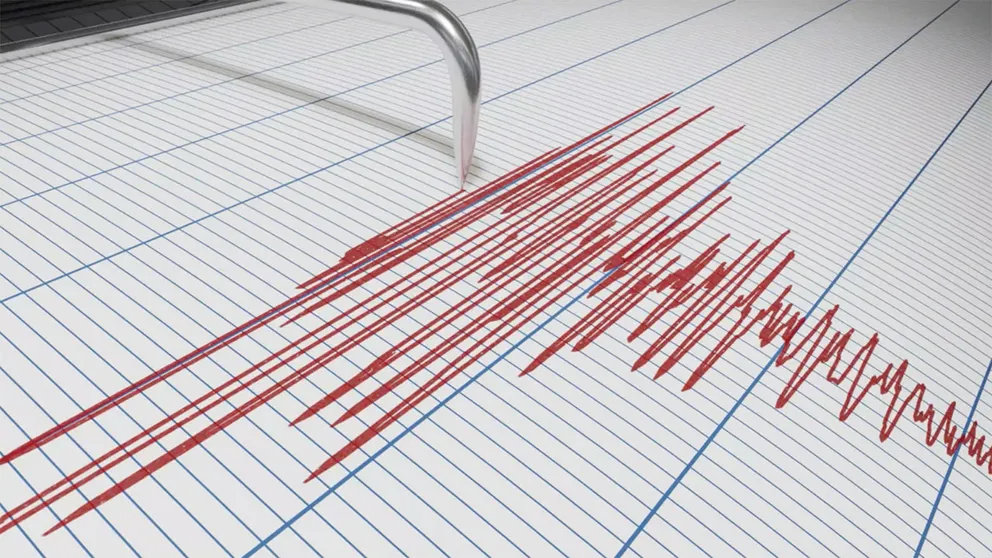Let the Paris Games begin. The Olympics are officially underway after a memorable opening ceremony Friday.
Saturday's events will...
 02:25[1]
02:25[1]
...
 02:42[1]
02:42[1]
...

The U.S. Supreme Court has sent back to lower courts the decision about whether states can block social media companies such as Facebook and X, formerly Twitter, from regulating and controlling what users can post on their platforms.
The best graduation speeches dispense wisdom you find yourself returning to long after the graduation tassels are turned. Take the feel-good life advice in Baz Luhrmann’s song to a class that graduated 25 years ago. Only on a recent relisten did I
Why are babies born prematurely? Researchers still don’t really know.
Obstetricians are very good at managing the process of birth. But when it comes to predicting whether a baby will be born in a timely manner, the science is still catching up[1].



 Soldiers assigned to the 173rd Airborne Brigade, Mountain Warfare School personnel, West Point cadets and Italian army counterparts took on the Palestra di Roccia Landro climb in the Dolomites, Italy, June 13, 2024.
The training initiative, which included
Soldiers assigned to the 173rd Airborne Brigade, Mountain Warfare School personnel, West Point cadets and Italian army counterparts took on the Palestra di Roccia Landro climb in the Dolomites, Italy, June 13, 2024.
The training initiative, which included 
Defense Secretary Lloyd Austin said Thursday that, in his more than three years of working with Vice President Kamala Harris, she has been with him and the president for some of their toughest decisions and "always a part of the process."
The assessment, which Austin offered in response to a question about the vice president from reporters during a Pentagon press conference, comes just days after President Joe Biden's surprise decision not to seek reelection in November and Harris being on track to take over for him at the top of the Democratic ticket.
Austin, a retired four-star Army[1] general and now a civilian Cabinet member and Biden appointee, painted Harris as prepared and always engaged on national security issues. He said at the start of his remarks that he was not making "any kind of political commentary" but rather relaying what he witnessed as defense secretary.
Read Next: National Guard May Be Without Leadership After Last-Minute White House Nomination for New Chief[2]
If reporters look at what the Biden administration has tackled "over the past three and a half years -- strikes that we've had to take, the deployments[3] that we've done, the decision to support Ukraine ... there's just thing after thing after thing," Austin said.
"She's always there, she's always a part of the process, and she's always very engaged," he added.
In her brief time as the likely presidential nominee, Harris has already started to receive scrutiny from Republicans for her role on tackling immigration from Central America, while she has begun to highlight her background as a prosecutor.
As a result, little is known about her views on the military[4] and veterans issues or how she would act as commander in chief. The Associated Press reported Thursday[5] that Harris was scheduled to meet separately with Israeli Prime Minister Benjamin Netanyahu, apart from a meeting Biden had scheduled with the Israeli leader during his visit to Washington, D.C., suggesting she may become more involved in global security issues as a presidential candidate.
Austin's remarks suggested that, while Harris may have been out of the public eye for much of the Biden administration's time in the White House, she was an active participant in national security decisions.
"I've seen her help the team, help the president work through some very, very complex issues," Austin said, adding that "she is a key player."
In 2021, Harris told CNN[6] that she was the last person in the room and supported Biden's decision to completely withdraw troops from Afghanistan.
Austin also noted that Harris has "represented this country in the international arena, on the international stage, a number of times."
In November 2022, Harris met with Chinese leader[7] Xi Jinping on the sidelines of an economic leadership conference in Thailand. "She understands ... national security, international affairs," Austin argued, citing that meeting.
Harris has not met with Russian President Vladimir Putin, who launched an invasion of Ukraine in 2022. The U.S., NATO allies and nations around the world have since worked to equip and support the Ukrainians in their fight against the Russian aggression.
The Pentagon considers China its "pacing challenge" on the world stage, and the current U.S. National Defense Strategy, released in March 2022, labels Russia as an "acute" threat.
As of Thursday, Harris' campaign website did not have any policy statements. However, in 2019, when she first ran for president, Harris released a detailed plan for veterans and service members[8] that largely focused on improving benefits and care offered to veterans.
The plan called for extending Department of Veterans Affairs health care and housing assistance to veterans with other-than-honorable discharges stemming from PTSD or brain injuries, as well as improving military housing, creating a grant program for housing homeless[9] veterans, cracking down on fraud against service members and veterans, and making it easier for immigrants to serve in the military and apply for citizenship if they do.
-- Rebecca Kheel contributed to this report.
Related: Here's Kamala Harris' Record on Veterans and Military Issues[10]
© Copyright 2024 Military.com. All rights reserved. This article may not be republished, rebroadcast, rewritten or otherwise distributed without written permission. To reprint or license this article or any content from Military.com, please submit your request here[11].
 Flavor Flav[1] is ready to meet Simone Biles[2]! ET's Nischelle Turner spoke to the 65-year-old rapper ahead of the 2024 Olympic Games[3], and he revealed that he's most excited to meet the gymnast while in Paris for the global event.
"She's my favorite
Flavor Flav[1] is ready to meet Simone Biles[2]! ET's Nischelle Turner spoke to the 65-year-old rapper ahead of the 2024 Olympic Games[3], and he revealed that he's most excited to meet the gymnast while in Paris for the global event.
"She's my favorite
...
 It's true that Rob Lowe[1] was on The West Wing[2] but now he really wants to be in the West Wing.
It's true that Rob Lowe[1] was on The West Wing[2] but now he really wants to be in the West Wing.
...
The 60-year-old actor hilariously threw his hat in the ring to be Kamala Harris' running mate in a sketch on The Tonight Show Starring Jimmy Fallon.Read more https://www.etonline.com/west-wing-star-rob-lowe-auditions-to-be-kamala-harris-running-mate-229727
 Hoda Kotb[1]'s "dream" came true at the 2024 Paris Olympics[2].
Although the Olympics opening ceremony[3] happened on Friday, the spectacle that left Kotb, 59, awestruck was meeting Tom Cruise[4], 62. Kotb took to Instagram[5] to share an iconic selfie she
Hoda Kotb[1]'s "dream" came true at the 2024 Paris Olympics[2].
Although the Olympics opening ceremony[3] happened on Friday, the spectacle that left Kotb, 59, awestruck was meeting Tom Cruise[4], 62. Kotb took to Instagram[5] to share an iconic selfie she
...
 Gun control activists[1] are ramping up spending to elect presumptive Democratic nominee Kamala Harris president and help Democrats capture the House of Representatives in November.
GIFFORDS, a gun violence prevention group founded by former Congresswoman Gabrielle
Gun control activists[1] are ramping up spending to elect presumptive Democratic nominee Kamala Harris president and help Democrats capture the House of Representatives in November.
GIFFORDS, a gun violence prevention group founded by former Congresswoman Gabrielle
...
Read more https://www.foxnews.com/politics/giffords-group-spend-15-million-support-harris-anti-gun-candidates
 A federal judge on Friday permanently blocked part of Florida's "Stop Woke Act" that was pushed by Republican Gov. Ron DeSantis[1] and other GOP lawmakers to ban critical race theory training in the workplace and in education.
Chief U.S. District Judge Mark
A federal judge on Friday permanently blocked part of Florida's "Stop Woke Act" that was pushed by Republican Gov. Ron DeSantis[1] and other GOP lawmakers to ban critical race theory training in the workplace and in education.
Chief U.S. District Judge Mark
...
 Former President Donald Trump[1] criticized Vice President Kamala Harris on Friday as a "bum" responsible for the influx of migrants flowing across the U.S.-Mexico border during her tenure in the Biden administration.
Trump made the comments about Harris at the
Former President Donald Trump[1] criticized Vice President Kamala Harris on Friday as a "bum" responsible for the influx of migrants flowing across the U.S.-Mexico border during her tenure in the Biden administration.
Trump made the comments about Harris at the
...
Let the Paris Games begin. The Olympics are officially underway after a memorable opening ceremony Friday.
Saturday's events will...
PARIS -- Having the two best big men dealing with illness when facing the three-time NBA Most Valuable Player isn't ideal, but that is what Team USA is dealing with as it readies to open Olympic play.
Joel Embiid[1] missed practice Saturday with...
A surprising technique has helped scientists observe how Earth’s oceans are changing, and it’s not using specialized robots or artificial intelligence. It’s tagging seals.
Several species of seals live around and on Antarctica and regularly dive more than 100 meters in search of their next meal. These seals are experts at swimming...
Cheese is a relatively simple food. It’s made with milk, enzymes – these are proteins that can chop up other proteins – bacterial cultures and salt. Lots of complex chemistry goes into the cheesemaking process[1], which can determine whether the cheese turns out soft and gooey like mozzarella or hard and fragrant like Parmesan.
In...
As a species, humans like to think that we are fully in control of our decisions and behavior. But just below the surface, forces beyond our conscious control influence how we think and behave: our genes.
Since the 1950s[1], scientists have been studying the influences genes have on human health[2]. This has led medical professionals,...
The primitive hate on display in the streets around the globe cries out for a Final Solution to the Jewish Problem.
It is time to end the Jewish Problem once and for all.
Both the problem and solution are simple, and this instruction can be short.
The decision and responsibility for it are yours.
First one bank announced it will only accept digital currency.
Now the Reserve Bank of Australia has announced it is heading into digital currency.
As the moth is to the flame, so are the follies of man.
Artificial intelligence and the next level of quantum computing will render passwords and encryption efforts obsolete.
The point of having a nation of laws is twofold: (a) you know how to prosper, and (b) you know how to stay out of jail.
The persecution of President Trump has revealed a new threat of charlatan prosecutors and agency administrators cobbling together disparate statutes which the media kindly calls “innovative”, “artful” or “novel” interpretations or constructions.
But these recombinations are actually new laws because they are the nouns, adjectives, adverbs, and contexts in criminal statutes, strung together in new combinations to create newly criminalized conduct after a citizen has engaged in some conduct.

...